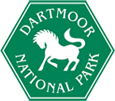Bronze Age farmers
We know that people were visiting Dartmoor, to hunt, over 10,000 years ago, but it wasn’t until about 4,500 years ago, that people began to settle down in large numbers, to farm the land.
These first farmers settled in upland Dartmoor because it would have been more open than the heavily wooded valleys below. They would have had to clear dense thickets of alder and hazel before they could start farming the land, with nothing more than simple hand tools.
Granite builders
These Bronze Age settlers lived in round huts, with strong granite walls and thatched roofs. They gathered in small communities, often protected by a defensive wall.
As they cleared the land, they divided the landscape with long stone boundary walls, which we call reaves. These ran in parallel lines for several miles across the land, and traces of them can be seen as low boundaries on the open moor, or fossilised within later dry stone walls. The landscape must have held particular significance for them because they constructed, within it, important monuments, such as burial mounds, stone rows and stone circles. The reason for positioning these monuments where they did or the purpose of them can only be guessed at.
Across the moor there are many burial mounds or cairns and cists (stone lined graves). Archaeologists think that only the most important people would have been buried like this. One of the most exciting discoveries made on Dartmoor in the last hundred years has been the Whitehorse Hill cist. It became visible as the peat around it naturally eroded. Archaeologists got special permission to excavate it, and found the cremated remains of a young woman, buried with some incredible objects over 4,000 years ago. The objects were examined by scientists then put on display at Plymouth Museum. These delicate treasures are now being conserved.
Discover more of the Dartmoor Story
Use the Heritage Trails interactive map to look for hut circles, stone rows, stone circles and other signs of Bronze Age life across the moor, plan your own walk or download one of the heritage trails.
- Moor than meets the eye has been Unveiling the Bronze Age landscape of the high moor which has helped people explore Bronze Age Dartmoor through a range of projects
- Visit the National Park Visitor Centre at Postbridge to learn more about the Bronze age and see some amazing replicas of artefacts found on the moor
- Walk around Bellever Forest and use our guide
- Visit Grimspound a Bronze Age settlement near Widecombe, one of Dartmoor's Top Ten Archaeological sites to visit
- Find out more about other heritage projects undertaken by the Moor than meets the eye partnership
- Jump forward in time to Moor Medieval
Do you want more information?
- Explore the human timeline for Dartmoor
- Visit the Moor than meets the eye website to learn more about the exciting projects that have helped to protect and care for Dartmoor's heritage.
- Read more about the Bronze Age heritage of Dartmoor
- Download a Prehistory Fact Sheet or Prehistory Poster
- You can explore all our Resources here
- Read the archaeological report for the Ripon Tor Premier Archaeological Landscape
- Read the archaeological report for Fernworthy part 1 part 2


